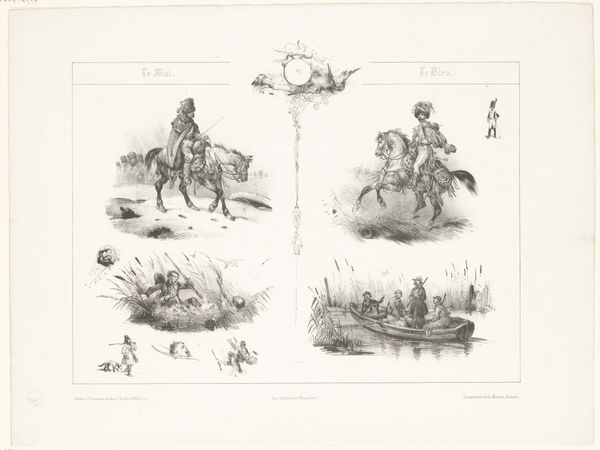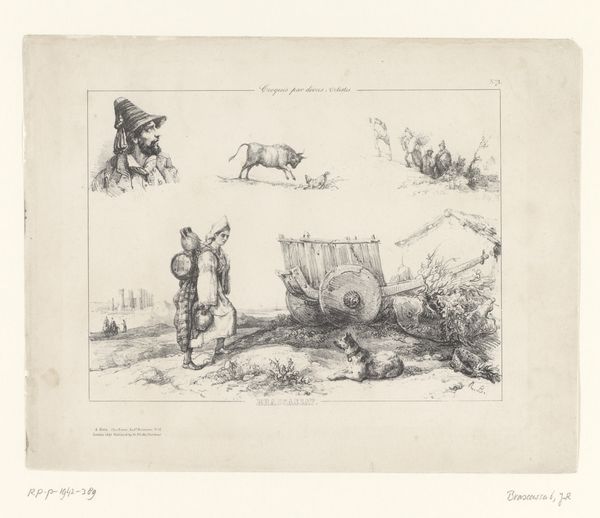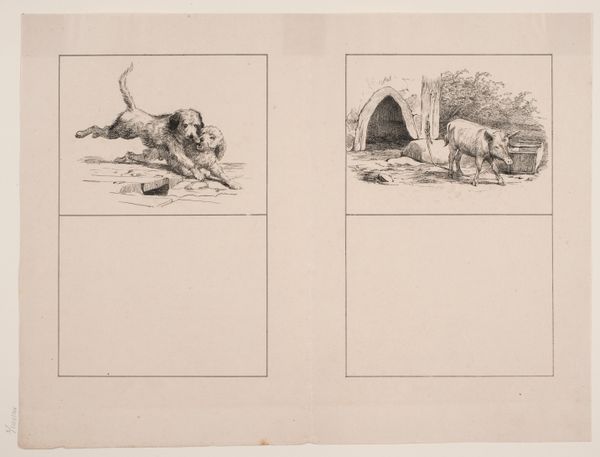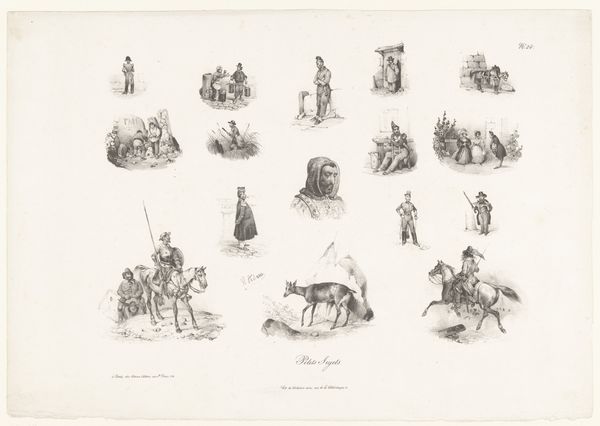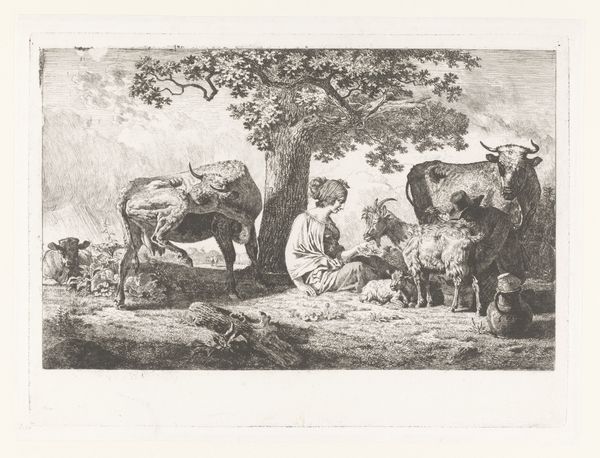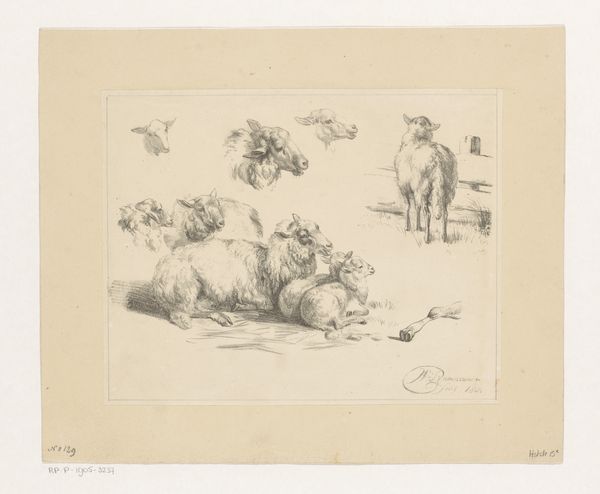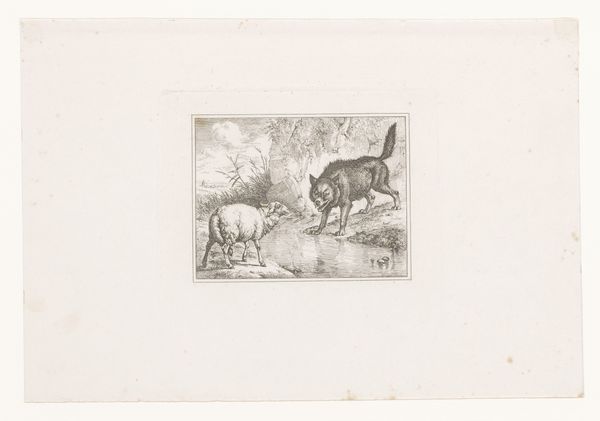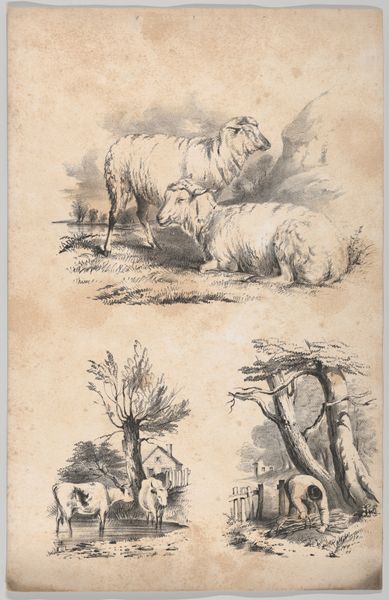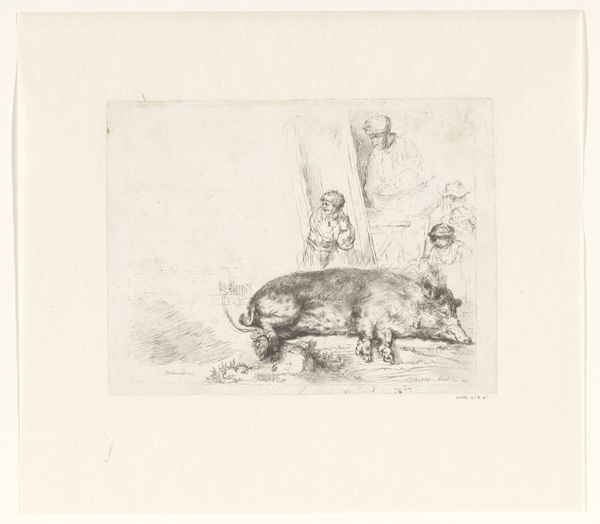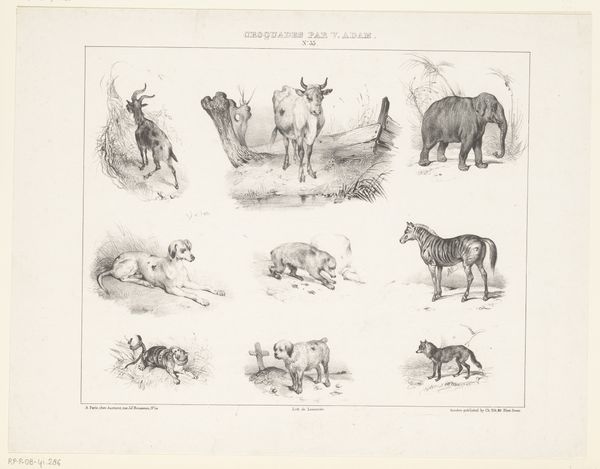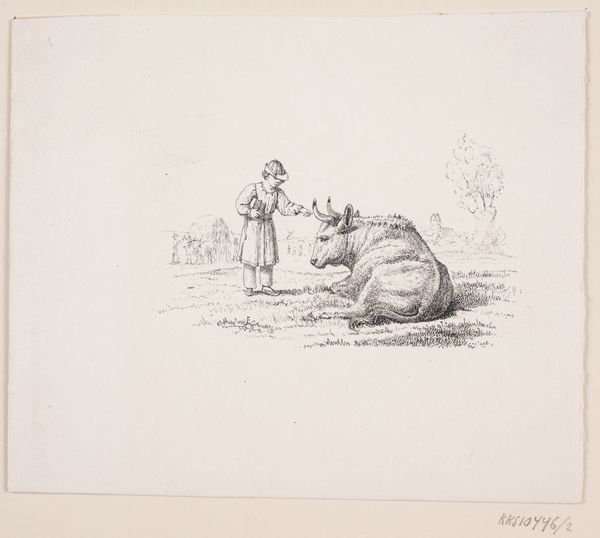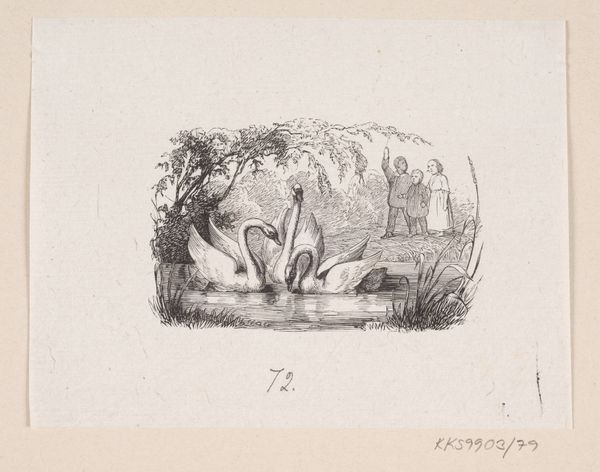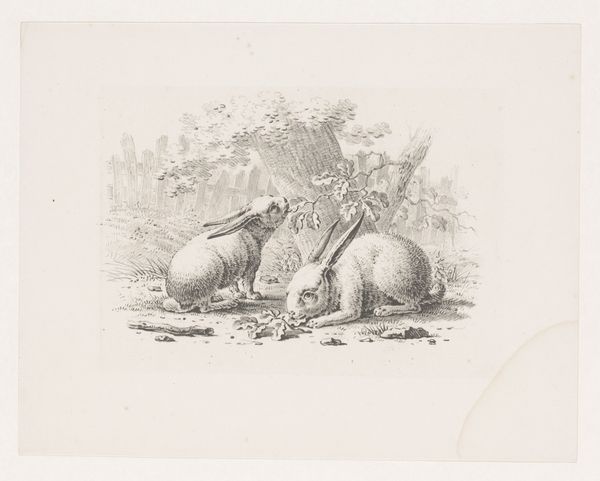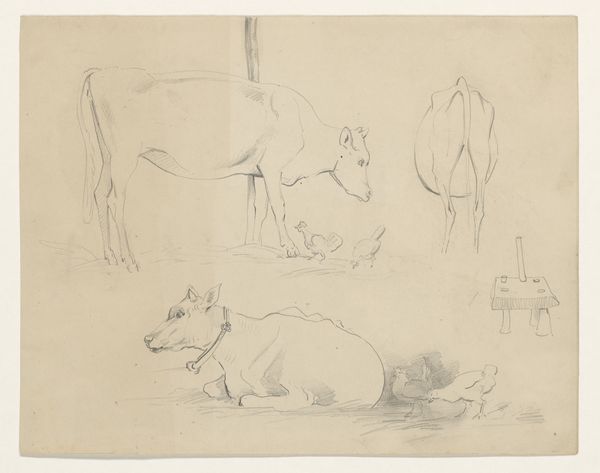
drawing, print, etching, pencil
#
pencil drawn
#
drawing
# print
#
etching
#
pencil sketch
#
pencil drawing
#
pencil
#
genre-painting
#
history-painting
#
academic-art
#
realism
Dimensions: 80 mm (height) x 105 mm (width) (bladmaal)
Curator: Here we have Adolph Kittendorff's "Prøveblad," dating back to 1850. It's an etching, likely used as a test plate, and it contains a variety of sketches, rendered in pencil and etching. Editor: My first impression is one of intriguing eclecticism! There's a real sense of travel and cultural encounter here—almost like a visual scrapbook. What are the threads tying all of these images together? Curator: That's a great question. Considering Kittendorff's interest in realism and genre painting, the plate could have been a study sheet, or even a reference tool for future works incorporating historical painting elements. The various images point to that, focusing on diverse people, animals, and landscapes. The material processes support this function of production in art creation and replication. Editor: I find the isolated figures so compelling. Look at the portrait of the man with a turban – there's such detail in his expression. Then, juxtapose him with the indigenous figure or the finely dressed woman, seemingly Western, nearby. Each figure functions as a cultural marker in their garb, expression, and even their relative sizes on the plate, and the overall effect invites cross-cultural readings. What sort of message was Kittendorff hoping to transmit through these figures and compositions? Curator: I suspect Kittendorff was simply cataloging and composing the imagery and figures that may have served the artist’s artistic endeavors. The different uses of medium, from what appears as a loose sketch and more labored attempts on areas like the portrait of the bearded man reveal the artist trying out different methods, but perhaps more significantly, working within the social constructs for "high art" at the time, incorporating labor and technique to justify production costs. Editor: Perhaps. But the placement of each sketch feels considered. The looming bull creates a focal point, an earthly groundedness, offset by the dreamlike wisps of pencil elsewhere. I am wondering what those meant symbolically to the artist. It feels beyond a mere compilation of visual samples, venturing towards a commentary on humanity and our relationship with nature. Curator: I see it more as a product of the 19th-century academic art world: exploring themes within the acceptable conventions to make saleable art to a market trained and expecting those things. Editor: Even within those boundaries, the imagery leaves open a realm of speculation and invites us to find patterns and messages within its making. Curator: It's fascinating to consider "Prøveblad" as a glimpse into 19th-century art production and also visual culture—with symbolism subtly shaping its impact. Editor: Indeed. And maybe seeing it now provides an important look at what matters, how it's made, and how our interpretations of materials change.
Comments
No comments
Be the first to comment and join the conversation on the ultimate creative platform.
